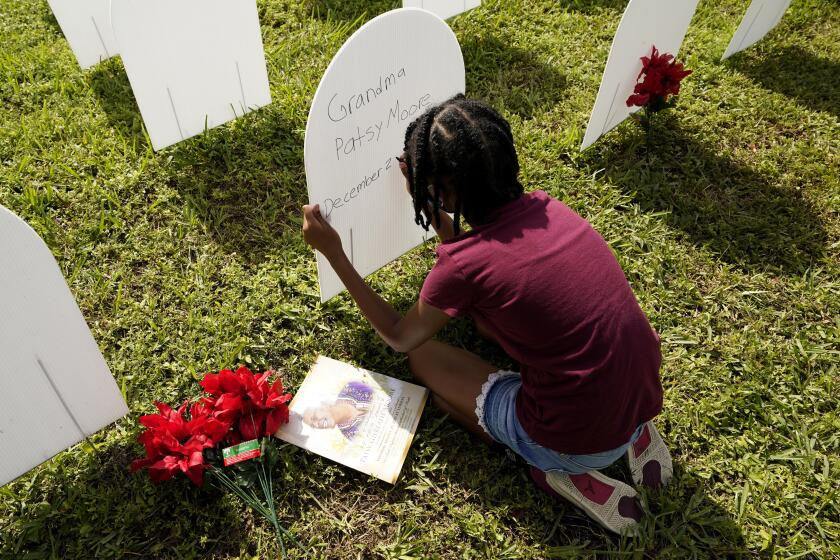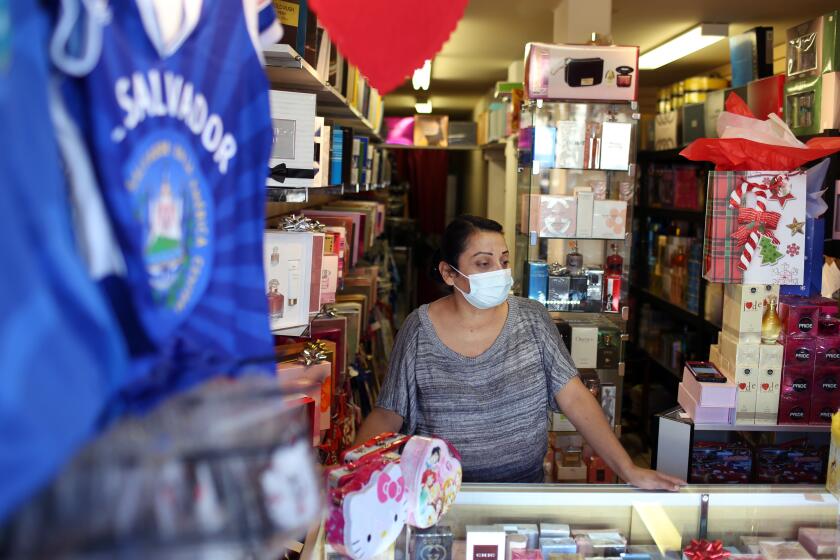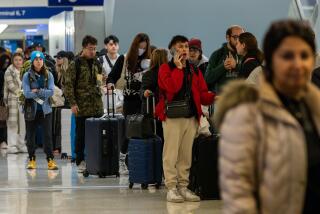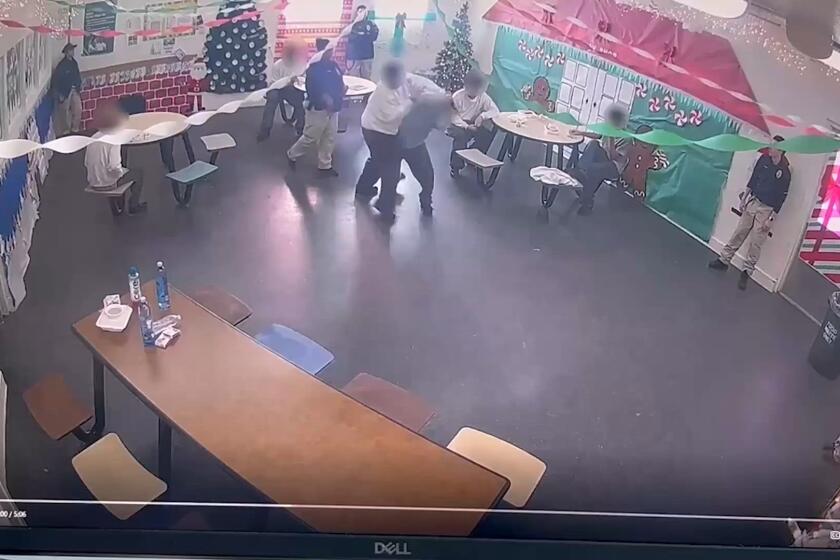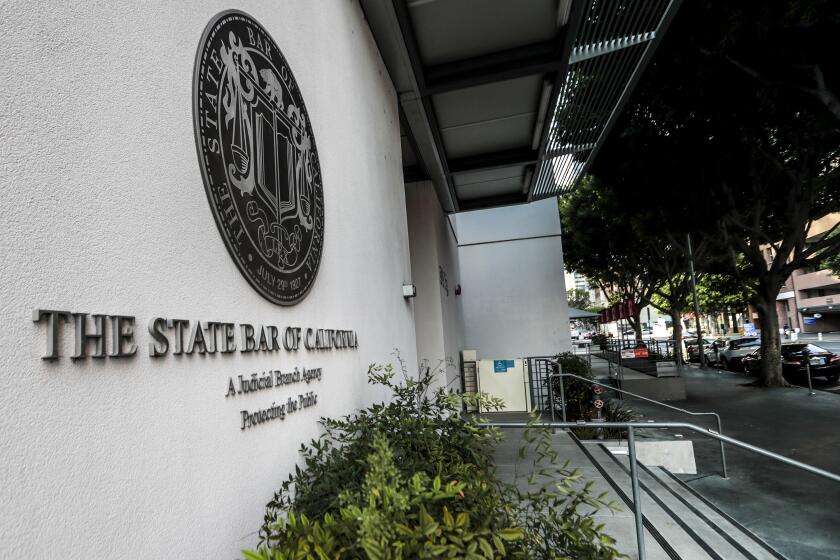L.A. County coronavirus surges hit upscale suburbs as well as the inner city
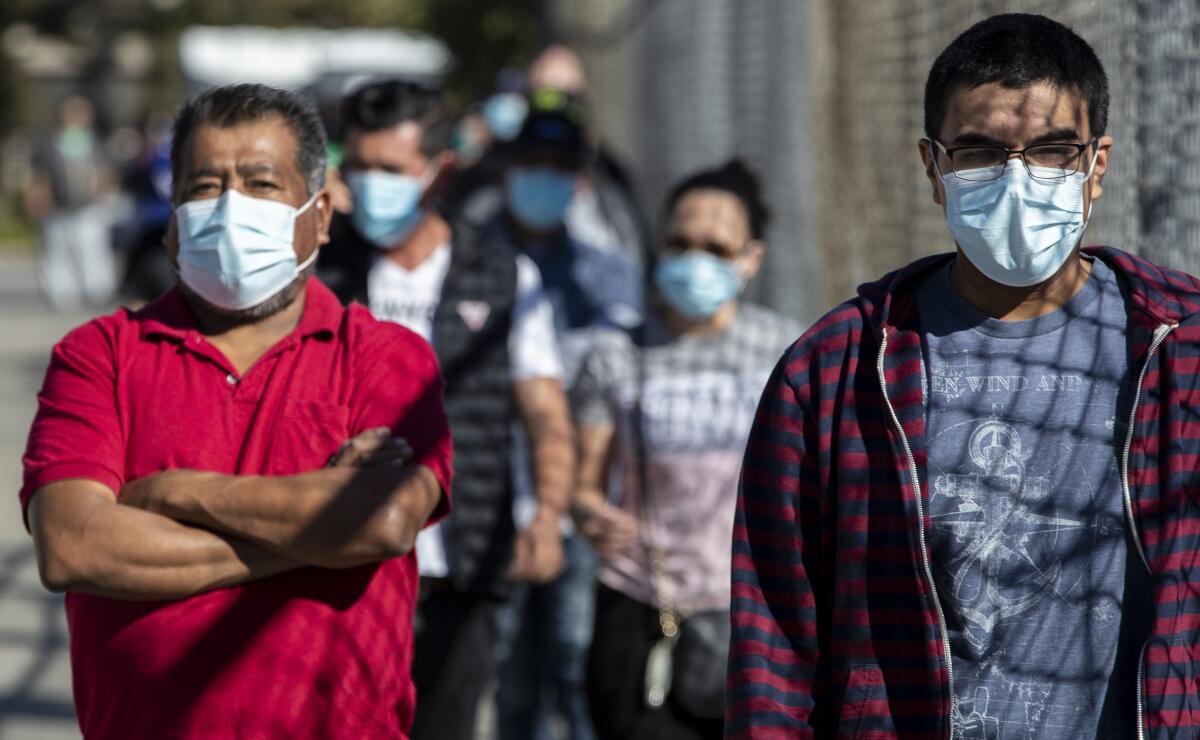
- Share via
The coronavirus is spreading more deeply into an increasingly diverse array of communities across Los Angeles County, hitting not only densely populated lower-income neighborhoods but some affluent suburbs as well.
It’s the latest sign that the unprecedented surge of the virus is increasing the risks to a wide swath of the population. On Thursday, L.A. County recorded an alarming 12,741 new cases of the coronavirus, shattering the single-day record by nearly 3,000 cases, and 74 deaths, the fourth-highest single-day total of the pandemic. The rising infections are going to put more pressure on already overburdened hospitals across Southern California, where capacity of intensive care beds continued to shrink to critical levels.
“This is the most dangerous time,” said L.A. County Public Health Director Barbara Ferrer.
L.A. County officials this week released data showing big jumps in coronavirus cases in dozens of communities in the San Gabriel Valley, South Bay, the Westside and central L.A. Communities that saw a more than 200% increase in coronavirus cases between late September and late November include Silver Lake, Claremont, Rosemead, San Gabriel, South El Monte, Hawthorne, Palms, Westchester, Lennox and parts of South Los Angeles.
Working-class areas of Los Angeles County with dense, crowded housing and neighborhoods with many essential workers have long suffered from high coronavirus cases, and Latino residents are getting infected, hospitalized and dying at disproportionate levels compared to white residents.
Sizable jumps in virus cases in affluent suburbs
But the dramatic rise in cases in relatively more affluent communities such as Westchester, Claremont and Silver Lake demonstrates how the coronavirus can easily radiate out to other communities.
For instance, Claremont, a majority white and relatively affluent suburb on the eastern edge of L.A. County, reported a 345% increase in its coronavirus cases reported in the last two weeks of November compared to the same period of September.
It was a sizable jump, although Claremont still has a lower-than-average case rate compared to the rest of the county. Claremont’s case rate in late November — 522 new coronavirus cases per 100,000 residents — was still below the countywide average of 622 per 100,000 residents.
“I’m not quite sure what’s going on there. I’d want to probably look at the trend over a period of time,” said Dr. Paul Simon, the chief science officer for the L.A. County Department of Public Health.
Claremont is geographically adjacent to a number of heavily Latino cities in neighboring San Bernardino County ravaged by the coronavirus. A statewide Times analysis of the hardest hit communities identified those along the 10 Freeway corridor in San Bernardino County as having among the state’s highest case rates, including in Bloomington, Colton, Fontana, Montclair, Rialto and San Bernardino.
Officials in L.A. County are watching another group of communities that also experienced spikes of at least 140%. Those include suburbs like La Mirada, Diamond Bar, San Dimas, La Verne, Whittier, Valinda, Chatsworth, Carson and Lawndale as well as Echo Park, Highland Park, Willowbrook, Vermont Knolls and San Pedro.
‘Many more people around you are now infected’
“If you live or work in these communities, please know that many more people around you are now infected,” Ferrer said. “With much higher rates of virus transmission, it’s critically important to stay at home as much as possible; and if you’re going out, to please always keep a distance of at least six feet and wear a face covering.”
As officials met to discuss approval of a coronavirus vaccine on Thursday, the number of cases and deaths grew ever more stunning.
It’s not unusual for cases that initially concentrate in one community to spill out to the broader community. Orange County epidemiologists observed how coronavirus cases initially concentrated in Santa Ana in May began spilling out to the rest of the county, and by July, high infection rates were reported from La Habra and Buena Park in the northern part of the county and south to Irvine and Costa Mesa.
In Los Angeles County, the rate at which coronavirus test results are coming back positive over the past week is now 11.7%, roughly triple what it was around Halloween, when the positivity rate was around 4%.
The county is now averaging nearly 9,500 new coronavirus cases a day over the last week, and 52 COVID-19 deaths a day. Those are both record numbers in this pandemic. Cumulatively, L.A. County has tallied 488,519 coronavirus cases and 8,151 COVID-19 deaths.
Latino and Black residents more likely to be hospitalized
Even with the new data, COVID-19 is still striking hardest in communities of color in L.A. County. Latino residents are now becoming infected with the virus at more than double the rate of white residents. Latinos were nearly three times as likely, and Black residents nearly twice as likely to be hospitalized after contracting the virus as white residents.

Latino and Black residents are also more likely to die from COVID-19 compared to white residents.
Latino communities are at higher risk for the illness for several reasons. Many are essential workers who must leave home to work in retail stores, manufacturing plants and other sites. That puts them at a greater risk of contracting the virus. Some Latino neighborhoods are more densely populated, making the virus easier to spread.
Latino workers have the highest rate of employment in essential frontline jobs where there’s a higher risk of exposure to the coronavirus, according to the UC Berkeley Labor Center; 55% of Latinos work in such jobs and 48% of Black residents do as well, compared with 35% for white residents.
During the summer and early fall, progress was made in reducing the disparity in COVID-19 hospitalizations among Latino and Black residents compared to white residents. But the latest surge has begun to erase those improvements.
‘In jeopardy of catastrophic consequences’
Other regions have also detected shifts in the demographics of those getting infected with the coronavirus. In Marin County, the virus initially spread disproportionately in the Latino community, likely through essential workers who got sick on the job. But more recently, there has been a spike among white residents, who health officials believe got it from indoor gatherings.
As a COVID-19 vaccine begins to become available, a new challenge emerges: convincing people to get it.
“We’re finding a greater proportion of those cases among people who are gathering indoors and might have a more reasonable option to avoid those exposures, because they’re based on personal choices,” Dr. Matt Willis told the Marin County Board of Supervisors in November. “It’s most discouraging that that’s what is driving it — but also encouraging because we think those are behaviors that people have more control over, because it’s not a matter of economic necessity.”
Availability of ICU beds hit alarming new lows
With cases rising, the availability of intensive care beds in Southern California and the Central Valley hit alarming new lows on Thursday.
“Like a speeding car approaching a cliff, if we do not rapidly change course, we are in jeopardy of catastrophic consequences,” Simon said.
In Southern California, ICU availability fell to 7.7% on Thursday, down from 9% the day before, the latest data show. The state defines the region as Imperial, Inyo, Los Angeles, Mono, Orange, Riverside, San Bernardino, San Diego, San Luis Obispo, Santa Barbara and Ventura counties.
The situation was even more dire in the San Joaquin Valley region, which is reporting 1.9% ICU availability, down from 4.2%.
Numbers have also worsened in the Greater Sacramento area, which reported in at 13.3% ICU availability, down from 14.3%; and the San Francisco Bay Area, which was at 17.8%, down from 20.9%.
The surge in cases likely represents the consequence of an explosion of virus transmission over the Thanksgiving holiday, officials said.
California on Thursday recorded 33,995 new coronavirus cases, marking the third highest tally for a single day, and 172 deaths.
California has averaged nearly 29,000 new coronavirus cases a day over the last week, a record. More Californians are also dying of COVID-19 than at any other point in the pandemic. The state has averaged about 150 deaths a day over the last week — breaking a record set in August.
Cumulatively, the state has logged more than 1.48 million coronavirus cases and more than 20,600 COVID-19 deaths.
Hospitalizations also surged to records. Statewide, an all-time high of 11,497 coronavirus-positive patients were hospitalized as of Wednesday, the most recent day for which complete data are available, the eleventh consecutive day the record has been broken.
In L.A. County, 3,624 people were in hospitals with coronavirus infections on Wednesday — four times as large as the number was a month ago, when 903 were in the hospital with COVID-19 on Nov. 9.
Nationally, more than 3,100 COVID-19 deaths were reported on Thursday, the highest single-day total of the pandemic, according to Johns Hopkins University. The cumulative national pandemic death toll is more than 292,000.
The U.S. Centers for Disease Control and Prevention forecasts that there could be 332,000 to 362,000 cumulative COVID-19 deaths by Jan. 2. Unless current trends change, the University of Washington’s Institute for Health Metrics and Evaluation forecasts a cumulative California death toll of about 25,000 by the same date, and 52,000 by the end of winter.
The California COVID Assessment Tool forecasts that the number of hospitalized people with COVID-19 in the state could double by Jan. 10, from about 11,500 currently to roughly 26,000.
More to Read
Sign up for Essential California
The most important California stories and recommendations in your inbox every morning.
You may occasionally receive promotional content from the Los Angeles Times.
